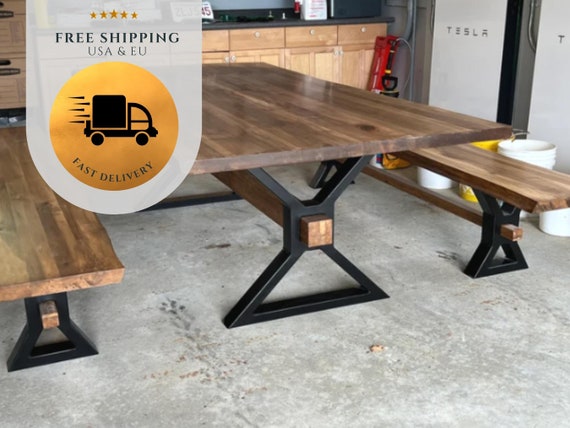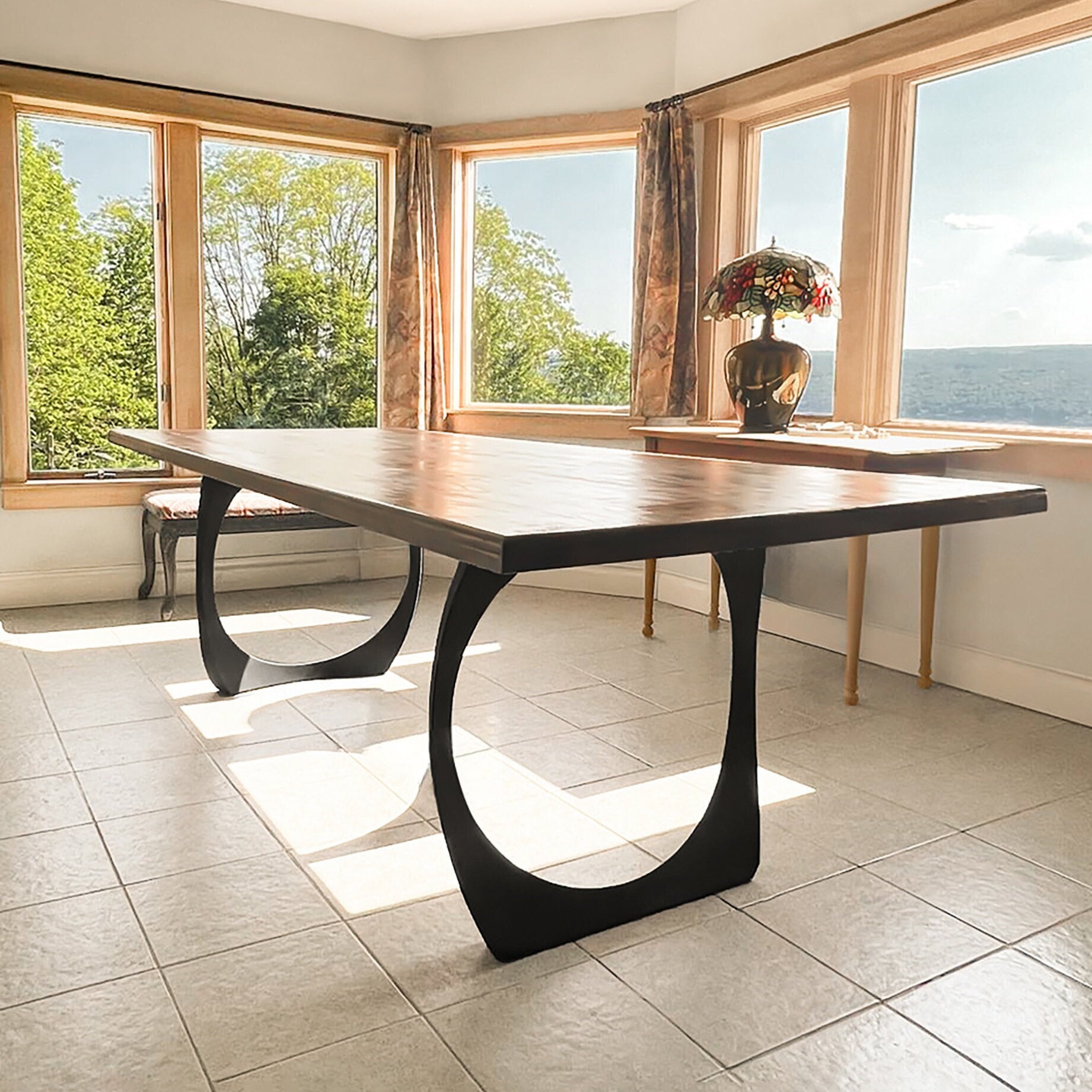Upgrade Your Furniture with Trendy Dining Room Table Legs
An In-depth Consider Dining Table Leg Styles: Discovering the Ideal Suit
Choosing the right table leg style is vital for both aesthetic charm and practical performance. Traditional four legs use classic sophistication and security, while the pedestal base offers increased legroom and a modern-day appearance. For those with bigger tables, trestle legs ensure tough support, whereas hairpin legs introduce a mid-century contemporary vibe with their minimalist style. The x-shaped legs blend modern style with boosted stability. Each of these options brings unique advantages, making the option extra than just an issue of preference. Check out even more to uncover which design completely enhances your dining area and way of living.
Conventional Four Legs
Among the different kinds of eating table leg designs, the conventional four-leg layout continues to be a timeless choice for numerous families. Four legs supply balanced assistance, making sure the table stays steady and qualified of birthing substantial weight (dining room table legs).
From a visual perspective, the traditional four-leg style can be quickly adapted to numerous indoor designs. Whether crafted from wood, steel, or a combination of materials, these legs can be elaborately carved, streamlined and minimalistic, or anything in between. Their adaptability enables them to match both rustic and contemporary settings perfectly.
Additionally, the uncomplicated structure of the four-leg style facilitates simplicity of activity and placement within an area. Unlike more complicated bases, this design reduces obstructions, offering enough legroom for diners. In recap, the traditional four-leg table leg style weds withstanding style with functional capability, making it an astute selection for those seeking both type and feature in their eating furniture.
Stand Base
Commonly celebrated for its classy and space-efficient design, the stand base is a prominent alternative to the typical four-leg setup in table leg designs. This distinct base typically features a single main column sustaining the tabletop, which can differ in type, from ornately sculpted timber to sleek, contemporary steel. One of the key benefits of the pedestal base is its ability to make best use of legroom and seating adaptability. Without corner legs, diners are managed higher freedom of movement, making it an excellent choice for round and oval tables that advertise more intimate and comprehensive gatherings.
Moreover, the stand base's central assistance can manage substantial weight, permitting for using heavier tabletops, such as marble or thick wood. This strength coupled with its aesthetic flexibility makes the pedestal base a prominent option in both standard and modern interior settings. It can perfectly integrate with various style styles, from timeless style to minimalist modernity. The central column itself provides a canvas for intricate designs and artistic expressions, including a component of visual interest underneath the table. In summary, the pedestal base incorporates capability with design, making it a fine-tuned and practical alternative for diverse find here dining settings.
Trestle Legs
Trestle legs provide a durable and ageless structure for dining tables, identified by their horizontal cross-bracing and sturdy assistance beams. Stemming from medieval times, this style has progressed yet kept its essential structure, making it a seasonal favorite in both typical and contemporary setups. The central trestle beam of light, frequently sustained by two or more upright messages, supplies extraordinary security, permitting bigger table lengths without the requirement for added legs.
A significant benefit of trestle leg tables is the ample legroom they provide. Unlike tables with four corner legs, the lack of blockages at the table's edges supplies unblocked space for chairs and restaurants, boosting comfort and ease of access. This makes trestle tables excellent for accommodating bigger celebrations, whether in a dining-room or a banquet hall.
The visual versatility of trestle legs is noteworthy. Offered in a selection of products such as wood, metal, and composite, they can be completed to match a vast range of interior styles. From rustic farmhouse to smooth contemporary layouts, trestle legs can be tailored to match individual tastes. Their enduring appeal and practical benefits make trestle legs a compelling option for those looking for both design and usefulness in their eating table.
Barrette Legs

The charm of barrette legs lies in their simplicity and convenience - dining room table legs. Available in a series of products, including steel and brass, they can be completed in countless colors to complement various indoor designs. Whether coupled with a rustic wooden table top or a why not try this out modern glass surface, hairpin legs effortlessly mix capability with a touch of classic appeal
Toughness is an additional noteworthy function of barrette legs. Regardless of their fragile look, these legs are crafted to bear substantial weight, guaranteeing the table continues to be secure and secure. Additionally, they are relatively simple to set up, making them a prominent option for do it yourself fanatics and specialist furnishings manufacturers alike.
X-Shaped Legs

Constructed from materials such as steel, timber, or a combination of both, X-shaped legs like it can be tailored to match numerous design preferences. Steel legs typically lend a sleek and commercial feel, suitable for loft-style apartment or condos and contemporary eating rooms. On the other hand, wood X-shaped legs offer a warmer, a lot more rustic allure, suitable for farmhouse or diverse insides. The versatility in materials permits homeowners to personalize their table to much better fit their overall design plan.
In addition, the design behind X-shaped legs ensures even weight distribution, reducing the danger of tottering and improving longevity. This makes them specifically well-suited for larger table that require additional support. Basically, X-shaped legs blend practical engineering with modern looks, making them a classic selection for diverse dining settings.
Final Thought
A detailed understanding of eating table leg designs exposes the unique attributes and advantages of each style. Conventional four legs offer stability and classic allure, while stand bases offer legroom and a streamlined appearance. Trestle legs ensure durable assistance for larger tables, and hairpin legs present a mid-century contemporary aesthetic. X-shaped legs combine modern layout with improved stability. Choosing the appropriate leg style ensures both functional and visual complete satisfaction in any dining room.